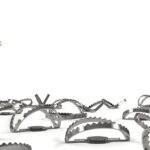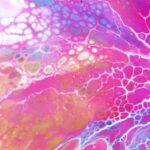If you study the structure and function of cells, tissues, or organs, your research will likely involve histology.
We have compiled helpful tips, tricks, and how-to guides written by researchers with hands-on experience in histology basics to help you get started or improve your histology skills.
We take you through the various stages of sample prep and the must-have items to get the job done, and provide insight into the various stains for histology and when to use them.
Histology Basics
If you’re new to the world of histology, or still getting up to speed, you’ve come to the right place. In this section, we’ll give you the knowledge to help get you on your way to producing fantastic histology results. Here, you’ll discover the history of histology, learn the pitfalls to avoid when performing your experiments, and even learn about the simple pleasures histology can provide.
Ever wondered what magic happens to turn your samples into histology slides? Find out the 5 simple steps for histology slide preparation.
Discover the history of histology, from the first mention of a cell in 1665 to the identification and development of various stains.
Discover seven common histology mistakes and how you can avoid making them when performing your experiments.
Immunohistochemistry isn’t just a useful clinical tool, it also has great applications as a basic research tool. We’ll walk you through the immunohistochemistry basics to get you off to a flying start.
Sample Prep
Histology tissue sample preparation involves multiple critical steps, from fixing and embedding to sectioning. Getting your sample preparation right is key to success with histology. Here we show you the different sample preparation techniques you can use, and top tips and tricks for becoming a master.
Tissue processing for histology is a key step between fixation and embedding. We take you through the steps of tissue processing in this simple guide.
How you fix your tissue or cells can affect your results, for better or for worse. Discover the key points to think about before undertaking your histology fixation.
Cryosectioning is difficult when your tissues melt, fold, curl, wrinkle, tear, or crack. Learn how to troubleshoot these pesky cryosectioning problems.
Looking for paraffin alternatives for tissue embedding? Find out the benefits of cryo and resin tissue embedding and how they work.
Do you know what your histology fixatives are really doing to your samples? Read on to learn what happens to tissue treated with two common fixatives.
Troubleshooting
Whether you’re just beginning your journey or you’re a histology master, sometimes things just go wrong. If you find yourself with problems during sample prep or your stainings don’t look right, don’t panic! Our troubleshooting articles will help you figure out what’s gone wrong with your histology and tell you how to fix it. Even if you’re lucky enough to have never had a problem, our tips can help you keep that winning streak going.
Downloads
Beautify your lab, and take your microscopy game to the next level with our free histology downloadables!
Histology Applied
Ready to be inspired? We’ve curated the top articles showcasing the various powerful and innovative ways histology can be used in research, from finding fungi to multiplexing your tissue probing. Not only do these articles highlight the various ways you can use histology, they provide helpful hints to get you using these techniques in your lab.
If you want to visualize elastic fibers in your sample, you need to use Verhoeff-van Gieson stain. Find out more about this stain, including how to use it.
Discover interesting facts about Congo red and it can help us understand Alzheimer’s disease.
Acid-fast stain (AF) is a special staining technique used in the histology lab. Discover which bacteria this stain detects, the history behind it, and how it works.
Gomori’s methenamine silver is a special histology stain for detecting fungi. Find out how and why you might want to use this stain in the lab.
Periodic acid-Schiff (PAS) is a commonly used special stain in the histology lab. Find out more about what this stain detects and how to use it.
Webinars
Contact Us
Got a Question or a Suggestion?
Didn’t find what you were looking for? Or perhaps you have some Histology tips and tricks that we haven’t covered here? Get in touch and let us know so we can continue to improve the information we share!
Most Recent
Tissue processing for histology is a key step between fixation and embedding. We take you through the steps of tissue processing in this simple guide.
Ever wondered what magic happens to turn your samples into histology slides? Find out the 5 simple steps for histology slide preparation.
Discover what hematoxylin and eosin staining is used for and how it works, in this concise guide.
Learn about four fixatives for histology, which one you should pick, and how. Plus, get some top tips for perfect sample preservation.
Achieving publication-quality immunofluorescence images is tricky. Learn what controls for immunofluorescence you can use to get them!
Discover 6 critical scanning electron microscopy sample preparation points you need to know to get the best out of your SEM.
How you fix your tissue or cells can affect your results, for better or for worse. Discover the key points to think about before undertaking your histology fixation.
Discover the history of histology, from the first mention of a cell in 1665 to the identification and development of various stains.
Histology Stains
There are an overwhelming number of stains for histology. In this section, we provide details on some of the most commonly used stains, how and when to use them, and tips for getting your staining just right.
From Alkaline phosphatase to Warthin-Starry, we take you through the various histology stains available.
Discover the magic of toluidine blue – a polychromatic dye that changes color depending on which tissue component it is staining.
Get introduced to some of the special stains for histology and learn some top tips for getting great results.
Want to detect iron in your samples? You need Prussian blue! Discover the incredible sensitivity of this stain and how to use it.
Discover interesting facts about Congo red and it can help us understand Alzheimer’s disease.
Gomori’s methenamine silver is a special histology stain for detecting fungi. Find out how and why you might want to use this stain in the lab.
Need to stain Gram-negative organisms? You should consider the Warthin-Starry stain.
Immunohistochemistry
Whether you’re wondering what immunohistochemistry is, how to get started with this powerful technique, or need some tips and tricks to improve your images, our articles can help. Discover ways to unmask your antigen, block non-specific staining, and learn the key controls you need to properly interpret your results.
Achieving publication-quality immunofluorescence images is tricky. Learn what controls for immunofluorescence you can use to get them!
If you want the kind of fluorescent IHC images worth those extra color publication charges, you’ve come to the right place. Read on for tips and tricks to getting stellar IHC staining.
Do you use biotinylated secondary antibodies in your immunohistochemistry? You could use polymers instead. They are a great time-saving reagent.
Need a simple, error-proof protocol for using immunohistochemistry to stain your slides? Here’s a protocol to try – from dewaxing to mounting.
Counterstaining can have a big impact on your histology result. This short guide will introduce you to some available counterstains providing you with a few more choices.
Achieving a good immunohistochemistry signal-to-noise ratio involves many factors, including a good blocking protocol. Read on to learn about blocking non-specific staining in IHC.
Did you know fixation can mask antigen sites in your sample? Discover how you can unmask them and get your signal back on track!
Glossary
Is there a Histology term you’re not quite sure about? We’ve compiled a glossary of Histology terminology to help you out. Just click on the term to see the definition.
































